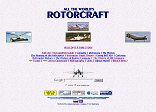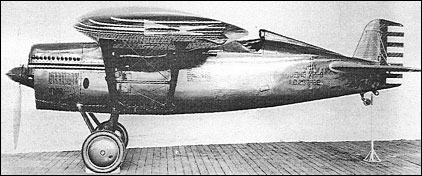|
| In May 1928, the USAAC issued a single-seat fighter
specification to which Boeing responded with a
shoulder-wing all-metal monoplane, the Model 96,
which was assigned the official designation XP-9. Low
development priority and production problems delayed
the planned delivery date of the XP-9 from April 1929
until September 1930, the aircraft eventually flying for
the first time on 18 November of that year. Powered by a
Curtiss V-1570-15 liquid-cooled engine rated at 600hp, but actually delivering 583hp, the XP-9 featured a
semi-monocoque fuselage of sheet Dural over metal
formers. Performance proved disappointing, the poor
vision from the rear-positioned cockpit and the
unpleasant handling characteristics resulting in the
test pilot referring to the XP-9 as "a menace". After
initial tests, the original vertical tail surfaces were replaced
by larger P-12 surfaces, but little improvement
resulted and the USAAC did not exercise its option on
five Y1P-9s.
| WEIGHTS |
| Take-off weight | 1643 kg | 3622 lb |
| Empty weight | 1210 kg | 2668 lb |
| DIMENSIONS |
| Wingspan | 11.13 m | 37 ft 6 in |
| Length | 7.66 m | 25 ft 2 in |
| Height | 2.36 m | 8 ft 9 in |
| PERFORMANCE |
| Max. speed | 343 km/h | 213 mph |
 | A three-view drawing (1280 x 840) |
| Jean Douglas, e-mail, 23.07.2024 02:01 I contacted H A C K M A V E N S C R E D I T S P E C I A L I S T a few days ago through text and surprisingly they are carrying out an actual credit fix, my score was raised from 514 to 765 excellent score within 5days and all repossession, derogatory, and inquiries were deleted from my report! I took advantage of this and you too can by reaching out to them via EMAIL: H A C K M A V E N S 5 @ G M A I L (DOT) C O M or Call /Text /Whats-App: [+ 1 (2 0 9) 4 1 7 â€" 1 9 5 7] and I’m sure you will be happy you did. reply | | Morgan Kennedy, e-mail, 10.12.2023 08:29 Mr. Jerry and I have worked together for many years now in a professional setting. I am a realtor and have clients in various stages of credit repair. Mr. Jerry is ALWAYS the person I recommend to my clients. His services are second to none & he has always done the best job in order to get my clients in a home as quick as possible when credit is holding them back. He has helped my family members, friends, & strangers I have met through my services. Thank you Mr. Jerry for caring about people like you do! You are making a difference!!! Reach out to Jerrylink Credit Group via: jerrylinkgroup@gmail.com or text 6265140620. Thank me later. reply | | Graham Clayton, e-mail, 13.02.2021 02:32 Landing and taking off would have been interesting with the lack of forward vision. reply | | William Bruns, e-mail, 14.12.2011 07:25 As a retired Boeing Customer Quality Manager I am always interested in the airplanes in the Boeing archives and thier history. I have never seen this one before until an article in my Flight Journal magazine, February 2012 issue, page 11 showed it and a website to view and download the plans. I have yet to fine the plans but am still looking. If they are available on the internet someplace I would love to see them. After 33 years with Boeing i am still an airplane nut. reply |
|
Do you have any comments?
|
| 
COMPANY
PROFILE
All the World's Rotorcraft
|









Did you ever find the plans for the XP-9?
reply